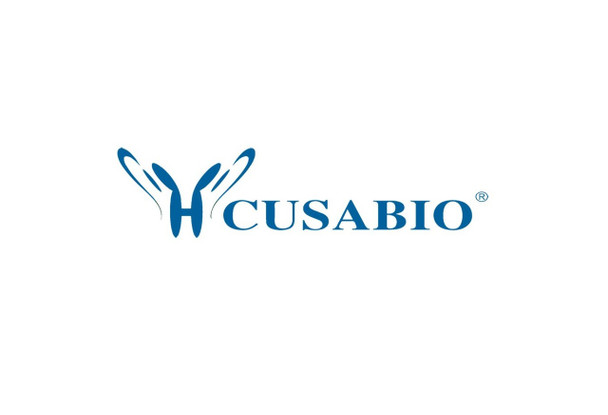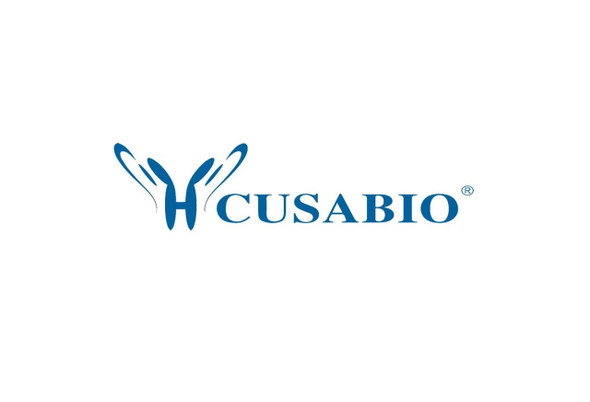Cusabio Human Recombinants
Recombinant Human Hyaluronan-binding protein 2 (HABP2), partial | CSB-EP617919HU(A4)
- SKU:
- CSB-EP617919HU(A4)
- Availability:
- 3 - 7 Working Days
Description
Recombinant Human Hyaluronan-binding protein 2 (HABP2), partial | CSB-EP617919HU(A4) | Cusabio
Alternative Name(s): Factor VII-activating proteaseFactor seven-activating protease ;FSAPHepatocyte growth factor activator-like protein;Plasma hyaluronan-binding protein
Gene Names: HABP2
Research Areas: Cardiovascular
Organism: Homo sapiens (Human)
AA Sequence: IYGGFKSTAGKHPWQASLQSSLPLTISMPQGHFCGGALIHPCWVLTAAHCTDIKTRHLKVVLGDQDLKKEEFHEQSFRVEKIFKYSHYNERDEIPHNDIALLKLKPVDGHCALESKYVKTVCLPDGSFPSGSECHISGWGVTETGKGSRQLLDAKVKLIANTLCNSRQLYDHMIDDSMICAGNLQKPGQDTCQGDSGGPLTCEKDGTYYVYGIVSWGLECGKRPGVYTQVTKFLNWIKATIKSESGF
Source: E.coli
Tag Info: N-terminal 6xHis-SUMO-tagged
Expression Region: 314-560aa
Sequence Info: Partial
MW: 43.3 kDa
Purity: Greater than 90% as determined by SDS-PAGE.
Relevance: Cleaves the alpha-chain at multiple sites and the beta-chain between 'Lys-53' and 'Lys-54' but not the gamma-chain of fibrinogen and therefore does not initiate the formation of the fibrin clot and does not cause the fibrinolysis directly. It does not cleave (activate) prothrombin and plasminogen but converts the inactive single chain urinary plasminogen activator (pro-urokinase) to the active two chain form. Activates coagulation factor VII.
Reference: The DNA sequence and comparative analysis of human chromosome 10.Deloukas P., Earthrowl M.E., Grafham D.V., Rubenfield M., French L., Steward C.A., Sims S.K., Jones M.C., Searle S., Scott C., Howe K., Hunt S.E., Andrews T.D., Gilbert J.G.R., Swarbreck D., Ashurst J.L., Taylor A., Battles J. , Bird C.P., Ainscough R., Almeida J.P., Ashwell R.I.S., Ambrose K.D., Babbage A.K., Bagguley C.L., Bailey J., Banerjee R., Bates K., Beasley H., Bray-Allen S., Brown A.J., Brown J.Y., Burford D.C., Burrill W., Burton J., Cahill P., Camire D., Carter N.P., Chapman J.C., Clark S.Y., Clarke G., Clee C.M., Clegg S., Corby N., Coulson A., Dhami P., Dutta I., Dunn M., Faulkner L., Frankish A., Frankland J.A., Garner P., Garnett J., Gribble S., Griffiths C., Grocock R., Gustafson E., Hammond S., Harley J.L., Hart E., Heath P.D., Ho T.P., Hopkins B., Horne J., Howden P.J., Huckle E., Hynds C., Johnson C., Johnson D., Kana A., Kay M., Kimberley A.M., Kershaw J.K., Kokkinaki M., Laird G.K., Lawlor S., Lee H.M., Leongamornlert D.A., Laird G., Lloyd C., Lloyd D.M., Loveland J., Lovell J., McLaren S., McLay K.E., McMurray A., Mashreghi-Mohammadi M., Matthews L., Milne S., Nickerson T., Nguyen M., Overton-Larty E., Palmer S.A., Pearce A.V., Peck A.I., Pelan S., Phillimore B., Porter K., Rice C.M., Rogosin A., Ross M.T., Sarafidou T., Sehra H.K., Shownkeen R., Skuce C.D., Smith M., Standring L., Sycamore N., Tester J., Thorpe A., Torcasso W., Tracey A., Tromans A., Tsolas J., Wall M., Walsh J., Wang H., Weinstock K., West A.P., Willey D.L., Whitehead S.L., Wilming L., Wray P.W., Young L., Chen Y., Lovering R.C., Moschonas N.K., Siebert R., Fechtel K., Bentley D., Durbin R.M., Hubbard T., Doucette-Stamm L., Beck S., Smith D.R., Rogers J.Nature 429:375-381(2004)
Storage: The shelf life is related to many factors, storage state, buffer ingredients, storage temperature and the stability of the protein itself. Generally, the shelf life of liquid form is 6 months at -20?/-80?. The shelf life of lyophilized form is 12 months at -20?/-80?.
Notes: Repeated freezing and thawing is not recommended. Store working aliquots at 4? for up to one week.
Function: Cleaves the alpha-chain at multiple sites and the beta-chain between 'Lys-53' and 'Lys-54' but not the gamma-chain of fibrinogen and therefore does not initiate the formation of the fibrin clot and does not cause the fibrinolysis directly. It does not cleave (activate) prothrombin and plasminogen but converts the inactive single chain urinary plasminogen activator (pro-urokinase) to the active two chain form. Activates coagulation factor VII
Involvement in disease: Thyroid cancer, non-medullary, 5 (NMTC5)
Subcellular Location: Secreted
Protein Families: Peptidase S1 family
Tissue Specificity: Ubiquitously expressed.
Paythway:
Form: Liquid or Lyophilized powder
Buffer: If the delivery form is liquid, the default storage buffer is Tris/PBS-based buffer, 5%-50% glycerol. If the delivery form is lyophilized powder, the buffer before lyophilization is Tris/PBS-based buffer, 6% Trehalose, pH 8.0.
Reconstitution: We recommend that this vial be briefly centrifuged prior to opening to bring the contents to the bottom. Please reconstitute protein in deionized sterile water to a concentration of 0.1-1.0 mg/mL.We recommend to add 5-50% of glycerol (final concentration) and aliquot for long-term storage at -20?/-80?. Our default final concentration of glycerol is 50%. Customers could use it as reference.
Uniprot ID: Q14520
HGNC Database Link: HGNC
UniGene Database Link: UniGene
KEGG Database Link: KEGG
STRING Database Link: STRING
OMIM Database Link: OMIM


-SDS__74662.1638525675.jpg?c=1)

-SDS__74662.1638525675.jpg?c=1)




